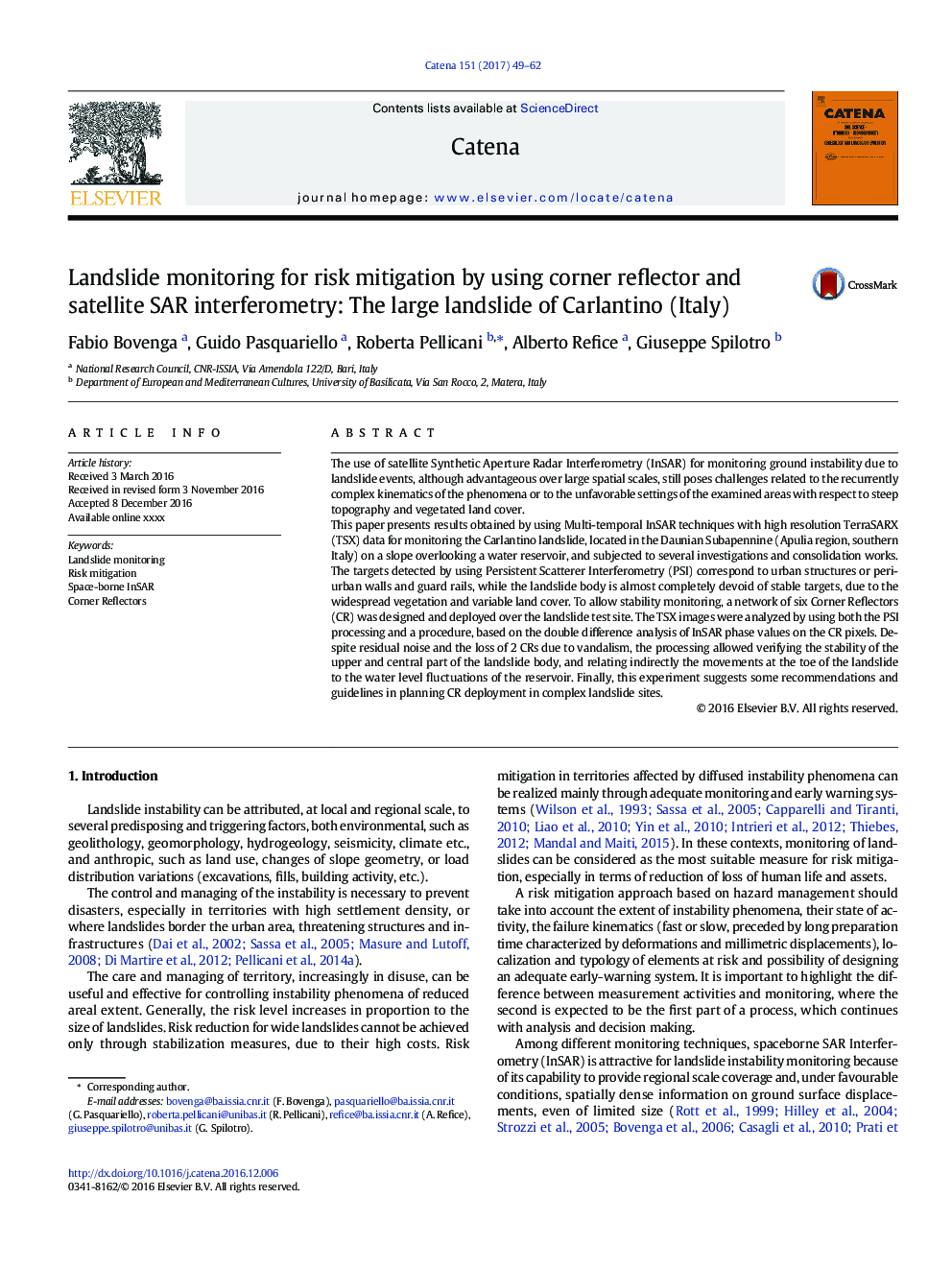| Article ID | Journal | Published Year | Pages | File Type |
|---|---|---|---|---|
| 5770172 | CATENA | 2017 | 14 Pages |
Abstract
This paper presents results obtained by using Multi-temporal InSAR techniques with high resolution TerraSARX (TSX) data for monitoring the Carlantino landslide, located in the Daunian Subapennine (Apulia region, southern Italy) on a slope overlooking a water reservoir, and subjected to several investigations and consolidation works. The targets detected by using Persistent Scatterer Interferometry (PSI) correspond to urban structures or peri-urban walls and guard rails, while the landslide body is almost completely devoid of stable targets, due to the widespread vegetation and variable land cover. To allow stability monitoring, a network of six Corner Reflectors (CR) was designed and deployed over the landslide test site. The TSX images were analyzed by using both the PSI processing and a procedure, based on the double difference analysis of InSAR phase values on the CR pixels. Despite residual noise and the loss of 2 CRs due to vandalism, the processing allowed verifying the stability of the upper and central part of the landslide body, and relating indirectly the movements at the toe of the landslide to the water level fluctuations of the reservoir. Finally, this experiment suggests some recommendations and guidelines in planning CR deployment in complex landslide sites.
Keywords
Related Topics
Physical Sciences and Engineering
Earth and Planetary Sciences
Earth-Surface Processes
Authors
Fabio Bovenga, Guido Pasquariello, Roberta Pellicani, Alberto Refice, Giuseppe Spilotro,
